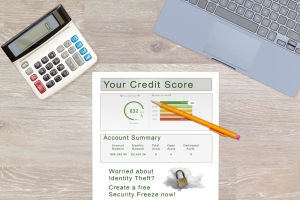
Sometimes life gets in the way of love, keeping people from “walking down the aisle” until later in life. If you’re middle-aged or older and are planning to get married or cohabitate with your partner, there are some potentially awkward issues you should probably talk about to make sure you’re on the same page.
Later-in-life marriages often come with strong tethers to people, places, accounts, and things that can complicate decisions and actions—whether it’s your ex-spouse, kids, grandkids, aging parents, debt, personal goals, or something else. It’s a good idea to be sure your trusted partner knows where you stand on these—and that your partner is willing to share similar information with you. Find a comfortable place to sit, chat, and share information about your assets, your goals and expectations. Also, talk about income, bills, and who will pay what—and when—while you’re living together.
Bowling Green State University’s National Center for Family & Marriage Research reports that 28% of 45-to 64-year-olds, and 31% of those 65 plus—are remarried.1 Whatever the reason, there are both advantages and disadvantages to getting married later in life—or to cohabitating, which increased 75% for those 50 and older between 2007 and 2017, according to Pew Research.2
The potential benefits of marrying later in life include:3
- Problem solving: Your experience and maturity give you and your partner better problem-solving skills and a stronger understanding of the importance of working together to accomplish goals, and overcome difficulties.
- Combined incomes: Combining incomes and assets—and potentially selling or renting your home or your partner’s home—can create a healthier financial situation.
- Tax benefits: Getting married gives you and your partner substantial financial and tax benefits. Also, married spouses can receive an unlimited amount of assets from their spouse without having to pay estate taxes.
- Longer lives: Single men and women don’t stay as healthy or live as long as their married counterparts, according to a study published in the American Journal of Epidemiology.4
The potential problems that can be created by marrying later in life include:5
- Lack of communication and financial agreements: Some older adults are reluctant to share information about their assets out of concern that the information may influence their partner’s decisions—including about their own healthcare if they become severely ill or incapacitated. For this and other reasons—including the potential for a “gray divorce”—a prenuptial agreement and a well-thought-out estate plan can give you confidence.
- Higher medical costs: Medical expenses rise as we age, and you will be responsible for your spouse’s debts. Eventually you and/or your spouse may need to go into an assisted living/nursing home.
- Responsibilities for children from previous relationship: If one spouse has children from a past relationship, the other spouse might have to share the financial responsibility, as a couple.
Other Considerations for Older Couples
A growing number of older couples are choosing to cohabitate instead of get married. Between 2000 and 2020, cohabitation among couples older than 50 quadrupled.6 Reasons included their desire to pass their assets to their kids, and to be able to retain Social Security benefits or alimony from their former spouse.6
Because of potential financial complications for older couples, it’s a good idea to talk to a trusted advisor, accountant, and/or estate lawyer to help you and your partner navigate and avoid potential stumbling blocks that could send you down the road to “gray divorce.” According to the American Bar Association, couples 50 years old and older currently make up a 25% of all divorces, and those 65 and older make up 10%.7
Questions about this topic? Contact First Financial’s Investment & Retirement Center by calling 732.312.1534. You can also email mary.laferriere@lpl.com or maureen.mcgreevy@lpl.com
Securities and advisory services are offered through LPL Financial (LPL), a registered investment advisor and broker/dealer (member FINRA/SIPC). Insurance products are offered through LPL or its licensed affiliates. First Financial Federal Credit Union (FFFCU) and First Financial Investment & Retirement Center are not registered as a broker/dealer or investment advisor. Registered representatives of LPL offer products and services using First Financial Investment & Retirement Center, and may also be employees of FFFCU. These products and services are being offered through LPL or its affiliates, which are separate entities from and not affiliates of FFFCU or First Financial Investment & Retirement Center.
Securities and insurance offered through LPL or its affiliates are:

This material is for general information only and is not intended to provide specific advice or recommendations for any individual. There is no assurance that the views or strategies discussed are suitable for all investors or will yield positive outcomes. Investing involves risks including possible loss of principal.
Prior to investing in a 529 Plan, investors should consider whether the investor’s or designated beneficiary’s home state offers any state tax or other state benefits such as financial aid, scholarship funds, and protection from creditors that are only available for investments in such state’s qualified tuition program. Withdrawals used for qualified expenses are federally tax free. Tax treatment at the state level may vary. Please consult with your tax advisor before investing.
1. AARP, June 2, 2023: Financial Checklist for Remarrying After 50
2. Pew Research Center, April 6, 2017: Number of U.S. adults cohabiting with a partner continues to rise, especially among those 50 and older
3. and 5. Senior Care Lifestyles: The Pros and Cons of Marrying Later in Life
4. NBC News, August 18, 2011: Single people may die younger, new study finds
6. Time magazine, September 19, 2021: Why Older Couples Don’t Need Marriage to Have Great Relationships
7. American Bar Association, March 9, 2022: 70s are the new 50s: How Grey Divorce Differs from a Typical Divorce
This material was prepared by LPL Financial, LLC
Tracking #486571-1
 Looking to make your money go further? One of the smartest and simplest ways to save money is by shopping off-season. From clothing and outdoor gear to holiday décor and even travel, buying items when demand is low can lead to major savings.
Looking to make your money go further? One of the smartest and simplest ways to save money is by shopping off-season. From clothing and outdoor gear to holiday décor and even travel, buying items when demand is low can lead to major savings.





